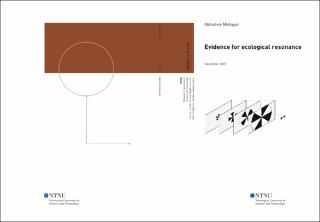| dc.description.abstract | In the ecological psychology approach, an organism and the environment encapsulating the organism are studied as a single dynamical system, with different scales of operation. Evidence based on neural underpinnings to showcase the inner workings of these different scales is scarce. Ecological resonance is claimed to occur between the ecological scale and the neural scale, where some variable Χ in neural dynamics ND is purported to be coupled with perceptual information Ψ.
The purpose of the current study was to find evidence for ecological resonance. A new visual motion perception study was designed to work with high density electroencephalography (HD EEG) for this purpose. 12 adults were recruited to look at a visual stimulus that combined looming and rotational motion dynamics. At the neural scale, time-frequency domain analysis was prioritised to search for neural dynamics, guided by the frequency related optical dynamics in the stimulus at the ecological scale.
A linear relationship was found between the frequency components from fast Fourier transform (FFT) of a 32.5Hz band in time spectral evolution (TSE) vs. the frequency of return to orientation. The coupling parameter k was found to be 2.468 and 8.226, with the sum of squares due to error (SSE) equal to 0.03206 and 0.1283 for participants O (in VCrL) and T (in VClR) respectively.
The low SSE values suggest a linear coupling relationship between the perceptual information particular to this study, and the frequency components derived from the FFT of 32.5Hz TSE band, representing neural dynamics. This suggests strong preliminary evidence in favour of ecological resonance. We suspect a cycling between multiple neuronal assemblies to respond to the ongoing stimuli, as a plausible biological explanation for the meaning behind FFT measure and a reason of sustained ERD. | |
